 The Organisation and Tactics of the Camillan Army
The Organisation and Tactics of the Camillan Army
The Roman army of 272 BC is a late development of the Camillan army. The only description of the organisation of the Camillan army which has survived comes from Livy (8.8-10). His purpose is to help the reader better understand the action in his narration of battle of the Veseris, so his account is also useful for its description of the army's manipular tactics.
The Camillan army was composed of the equites, or cavalry, and six infantry classes: the triarii, principes, hastati, rorarii, leves, and accensi. These five infantry classes may correspond roughly to the six classes of the early Servian military system. If so, the triarii correspond to the first class, the principes to the second class, and so on, with the leves and accensi both corresponding the fifth class. This correspondence also suggests that the various classes of the Camillan infantry were based in part on wealth. Until the late 2nd C BC, Roman soldiers supplied their own arms and equipment. Consequently, the youngest soldiers may have been placed in the leves if they were poor, or the hastati if they were wealthier. Older soldiers may have taken their places in the rorarii, principes, or triarii depending on the equipment they could afford.
Except for the leves (meaning "light-armed"), each infantry class was organised into fifteen maniples. Each maniple was composed of two centuries, and each century had thirty men. Twenty leves were attached to each maniple of hastati. With a total of 300 leves and 900 of each of the other other five classes, there were a total of 4800 men in a Camillan legion. This is in close agreement with Livy's round figure of 5000. In addition, the legion had 300 equites.
The legion was deployed for battle with the leves - armed with a spear and javelins - in front of the rest of the army, prepared to skirmish with the enemy. Behind them, the hastati, principes, and triarii were arranged in three consecutive lines. The hastati formed a line with with wide gaps between neighboring maniples. The principes formed a similar line behind the hastati, but shifted to one side so that each maniple was positioned behind a gap between maniples of hastati. The triarii were positioned exactly as the hastati, but behind the principes. Maniples of the rorarii were stationed immediately behind the triarii, and the accensi immediately behind the rorarii. In fact, one maniple each of triarii, rorarii, and accensi is called an ordo. The dispostion of the equites isn't mentioned, but they were probably deployed on one of the army's flanks.
In battle, the leves would skirmish until they had exhausted their javelins or been driven back by an enemy advance. Then the hastati would attack. If they couldn't defeat the enemy, they would withdraw through the gaps between the maniples of the principes, and the principes would continue the battle. If the principes were also unsuccessful, they would withdraw through the gaps between the maniples of the triarii. The triarii would then close the gaps to form a continuous line, engage the enemy, and determine the outcome of the battle.
The combat role of the rorarii isn't clear from Livy's description. He states that they were initially deployed near the rear of the army, and mentions them engaging in combat after the principes but before the triarii. At the same time, he seems to imply that they had also taken part in an earlier stage of the battle. The role of the accensi is also vague. They are positioned at the very rear of the army, and in Livy's battle description, they never engage in combat. Their only action is to fool the enemy into thinking the triarii had been committed to battle. This tends to indicate that the accensi were not combatants at all, but servants or unarmed replacements.
Leves

The leves (meaning "light-armed") are the light infantry of Roman legions and Latin cohorts. In battle, they are positioned in front of the rest of the army, where they skirmish with the enemy until their javelins are exhausted or an enemy advance drives them behind the heavy infantry. They may also be called upon to pursue a broken enemy.
The leves are armed with a spear and several light javelins. They wear no helmet or body armour, relying on speed and agility to preserve them from harm.
The leves are the youngest and poorest combatants in the army. Roman leves are recruited chiefly from Latium and its immediate vicinity, while Latin leves may be recruited from any region where a Latin colony is found.


 Hastati
Hastati

The hastati constitute a Roman army's first line of heavy infantry. A legion's hastati are organized into fifteen maniples of 60 men, and are the first to engage the enemy in close combat. In most cases their role is to wear down opposing troops. If they don't defeat the enemy before tiring, they withdraw behind the second line of heavy infantry, the principes, who carry on the battle.
Each hastatus is armed with two javelins, which he throws before engaging his opponent with a short sword, xiphos, or machaira. He carries a scutum (a large oblong shield) and wears a bronze helmet decorated with feathers or a plume. A few of the hastati may wear a bronze pectoral plate on their chests and a matching plate on their backs, He may also wear a greave or two to protect his lower legs.
The hastati are primarily younger men from farming families with enough wealth to afford the weapons and equipment described above. Roman hastati are recruited chiefly from Latium and its immediate vicinity, while Latin hastati may be recruited from any region where a Latin colony is found.
(Disclaimer: This unit is still work in progress in terms of its model and skin, and the legionary animations haven't been implemented yet)



 Principes
Principes

The principes form a Roman army's second line of heavy infantry. A legions' principes are organised into fifteen maniples of 60 men, and the maniples are arranged in a line with gaps between them. They enter battle after the first line of infantry, the hastati, tire and withdraw through the gaps between maniples. If the principes are unable to defeat the enemy, they withdraw through the gaps in the third line of heavy infantry, the triarii, and the triarii finish the battle.
Each princeps is armed with two javelins, which he throws before engaging his opponent with a thrusting spear. He carries a scutum (a large oblong shield) and wears a bronze helmet decorated with feathers or a plume. All principes wear some form of body armor and a pair of greaves.
The principes are men in their mid-twenties from farming families with enough wealth to afford the weapons and equipment described above. Roman principes are recruited chiefly from Latium and its immediate vicinity, while Latin principes may be recruited from any region where a Latin colony is found.



 Triarii
Triarii

The triarii form a Roman army's last line of heavy infantry. Like the rest of the legion's heavy infantry, they are organised in to fifteen maniples of 60 men each. The maniples are arranged in a line with gaps between them and rest on one knee while the first two lines of heavy infantry engage the enemy. If the hastati and principes are unable to win the battle themselves, they retire through the gaps in the line of triarii. The triarii then close the gaps in their line and enter combat like a hoplite phalanx to decide the battle.
Each triarius is armed with a thrusting spear and a sword. He carries a large round shield and wears a bronze helmet decorated with feathers, a plume, or a crest. All triarii wear some form of body armor and a pair of greaves.
The triarii are experienced soldiers wealthy enough to afford a hoplite panoply. Roman triarii are recruited chiefly from Latium and its immediate vicinity, while Latin triarii may be recruited from any region where a Latin colony is found.



 Equites romani
Equites romani

The equites are the cavalry of the Roman legions and cohorts of the Latin allies. Each legion had about 300 equites and a Latin cohort about 30. The equites would generally be deployed on the flanks of a Roman army.
The equites are armed with a spear and sword, carried a round cavalry shield, and wore a fine bronze helmet. Polybius was probably referring to the cavalry of the Camillan army when he wrote "in old times they had no cuirasses" and "were nearly naked". While this is almost certainly an exaggeration, the Roman and Latin cavalrymen of this period seem to be lightly armoured in the Italic tradition, some wearing large and small breastplates and linothorakes, but many wearing no body armour at all.
The equites are recruited from among the wealthiest and most influential members of Roman society. Typically, a young Roman aristocrat's career began with service in the equites. Many of the mounts (the equo publico) ridden by the equites were provided by the state with funds raised by a tax on widows and orphans. However, the equites also received the service of the less wealthy men who were able to provide themselves with a suitable mount. Roman equites are recruited chiefly from Latium and its immediate vicinity, while Latin equites may be recruited from any region where a Latin colony is found.



 Hastati sabelli
Hastati sabelli

"Sabellian" is a term meant to encompass most of the Oscan-speaking tribes of Italy, and includes the groupings known as the Samnites, Lucani, Bruttii, Campani, and Apuli. The Sabellians are a notably warlike people who frequently served as mercenaries with Greek armies in Italy and Sicily, and who fought a series of wars against the Romans over a period fifty years as Rome expanded into southern Italy. Even after Rome had conquered them, some Sabellians were always willing rebel, joining the armies of Pyrrhus and of Hannibal, and finally launching the Social War almost 200 years after Rome had conquered the Italian penninsula. When not in revolt, the Sabellians supplied roughly half of the manpower of Rome's Italian allies.
The Sabellian spearman represents the prototypical Sabellian warrior. He is armed with an oblong, spined shield, a pair of javelins, and a thrusting spear. He commonly wears an Attic helmet with a crest, plume, or several feather holders. Montefortino helmets are common too. Most have some form of chest protection: the triple disk cuirass, and both large and small pectorals, but some wear no armor at all. All wear a broad bronze belt, and most are equipped with a pair of greaves. Finally, they wear short tunics that drape apron-like in the front and back.
The Sabellian spearmen are recruited from all of the sabellian tribes of the Italian penninsula, from Picenum north of Rome, to Bruttium at the toe of the Italian boot.



 Equites sabelli
Equites sabelli

"Sabellian" is a term meant to encompass most of the Oscan-speaking tribes of Italy, and includes the groupings known as the Samnites, Lucani, Bruttii, Campani, and Apuli. The Sabellians are a notably warlike people who frequently served as mercenaries with Greek armies in Italy and Sicily, and who fought a series of wars against the Romans over a period fifty years as Rome expanded into southern Italy. Even after Rome had conquered them, some Sabellians were always willing rebel, joining the armies of Pyrrhus and of Hannibal, and finally launching the Social War almost 200 years after Rome had conquered the Italian penninsula. When not in revolt, the Sabellians supplied roughly half of the manpower of Rome's Italian allies.
The equites sabelli were the most common type of cavalry employed by the Sabellians and enjoyed a high reputation. They probably made up at least one third of the cavalry strength of a typical consular army. These cavalrymen are armed with a spear, sword, and two javelins. A number of south Italian tomb paintings show Sabellian horsemen carrying round or oblong spined shields and wearing crested (and sometimes winged) Attic helmets with paired feather holders. Other striking helmets are also portrayed. None wear heavy body armour; the triple-disk cuirass and large muscled pectoral can be identified, but most wear no chest protection. All are girt with a broad bronze belt, and greaves are sometimes worn, even by cavalrymen who are otherwise unarmoured. Almost all are barefoot, and on these we observe ankle bands which may mount spurs. Finally, all wear very short tunics which frequently fail to make the rider's hindquarters any less evident than those of his horse.
The equites sabelli are recruited from all of the sabellian tribes of the Italian penninsula, from Picenum north of Rome, to Bruttium at the toe of the Italian boot.





And as a special gift for you friends, here it is: the current intro video of the Romani. Hope you like it.




























 Reply With Quote
Reply With Quote












































 x 15
x 15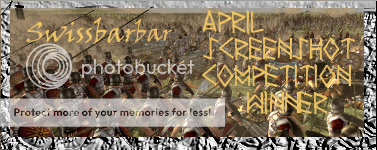




 Great video. Amazing
Great video. Amazing








 +
+ =
=


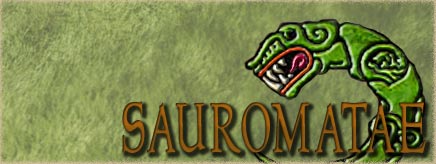
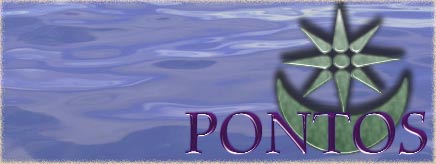
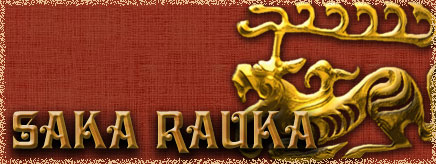







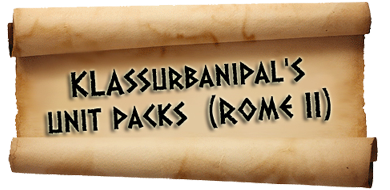




Bookmarks